Caster Brakes Explained
While caster brakes may appear to be of minor significance, they are essential in many applications, including industrial, medical, and domestic uses. Caster brakes are important in the overall function of the equipment they are part of, providing much-needed stability, control, and safety. Consider your needs and constraints when choosing swivel caster wheels with brakes for your application to maximize performance.
To assist with your selections, we’ll review types of caster wheel locks, common applications, and how to keep them maintained for long life and optimal function.
Understanding Caster Wheel Locks
At the most basic level, caster swivel brake locks are ingeniously designed mechanisms with a singular, critical role–they halt the rotation of a wheel. However, this simple explanation only scratches the surface of what these complex devices do. Because they are built into so many different kinds of equipment, these braking systems have a wide range of main jobs that can be very different from one another.
Types of Caster Brakes
Various types of caster brakes can be used for distinctive purposes. These include:
Side Lock Brakes: These are designed to lock by applying a braking force to the side of the wheel. They are commonly used where the equipment needs to be stationary for a significant amount of time. Side lock brakes are known for their reliability and ease of use.
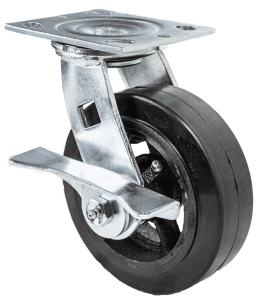
Face Contact Brakes: These brakes work by making contact with the face of the wheel, effectively halting its rotation. They are often used in heavy-duty applications due to their high stopping power. Face contact brakes are known for their durability and effectiveness in demanding environments.
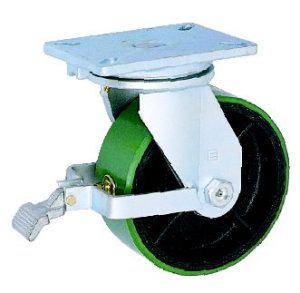
Total Lock Brakes: Designed to lock both the wheel and the swivel, these caster brakes provide complete immobility. This makes them ideal for situations where absolute stability is required. Total lock brakes are recognized for their superior holding capacity.
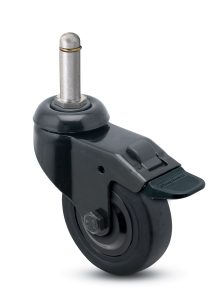
Floor Lock Brakes: These brakes use a foot-operated pedal to engage a friction pad against the floor to prevent movement. They are often used on equipment that requires easy mobility but also secure stopping. Floor lock brakes are appreciated for their simplicity and versatility.
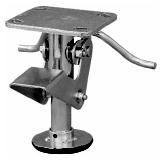
Compression or Decompression Brakes: These brakes work by either compressing or decompressing a spring mechanism to lock or release the wheel. They are commonly used in applications where smooth operation is essential.
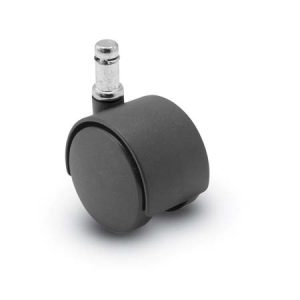
Thumb Screw Lock Brakes: These brakes employ a thumb screw mechanism to lock the wheel. They are often used in limited-load, light-duty applications where manual control is sufficient. They are favored for their ease of use and installation.
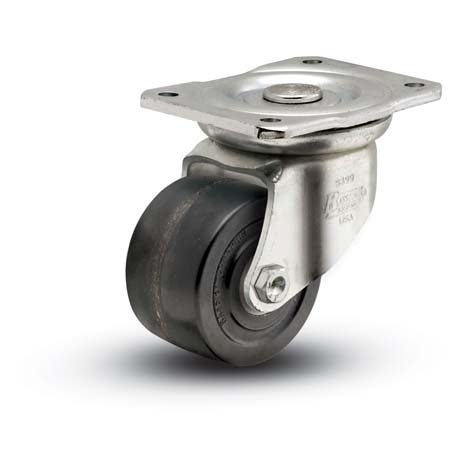
Tread Lock Brakes: These brakes lock the wheel by making contact with the tread, providing a large surface area for braking. They are often used in heavy-duty applications due to their high stopping power and durability.
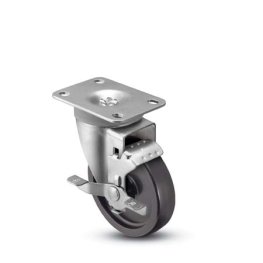
Cam Brakes: Employing a cam mechanism to apply a braking force, these brakes allow for exact control. They are commonly used where precision is important, such as with medical equipment.
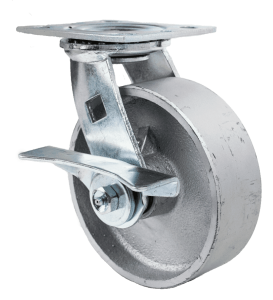
Position Locks: Designed to lock the caster in a specific position, these caster brakes are ideal for use with specialized equipment where precise movement is required.
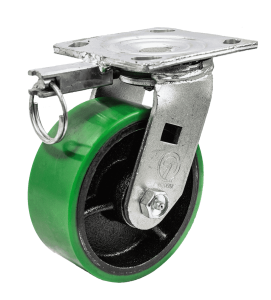
Swivel Locks: These locks prevent the caster from swiveling, providing directional control. They are commonly used where straight-line movement is required.
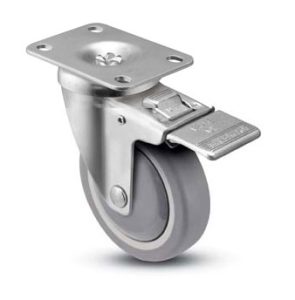
Choosing the Right Caster Brakes
Selecting the right industrial caster wheels with brakes involves a thorough understanding of the specific environment and conditions in which the brakes will be used, the particular requirements and constraints of the type of casters they will be attached to, and the financial budget that the selection must fall within. Balancing all these issues can guide users towards the most suitable, effective, and cost-efficient choices.
Industry Recommendations and Insights
The insights, advice, and recommendations of industry veterans can be invaluable during decision-making. Here’s what experts say about some of the caster brake locks we have talked about and the situations where they work best:
Side Lock Brakes:
Side lock brakes are ideal for light-duty applications like furniture or small equipment. They engage by tightening a lever or nut against the side of the caster, providing basic stopping power.
Applications: Office chairs, toolboxes, medical carts, light-duty platforms.
Floor Lock Brakes:
You will want to choose these caster lock brakes when you require more stopping power than side locks, and they are suitable for moderate-duty applications. They use a pedal or lever to engage a mechanism that presses directly onto the wheel tread, creating a firm lock.
Applications: Industrial carts, hospital beds, heavy tool chests, mobile workstations.
Total Lock Brakes:
For maximum stability and safety, total lock brakes are the way to go because they not only lock the wheel but also immobilize the swivel mechanism, preventing any movement.
Applications: Ladders, scaffolding, high-load platforms, equipment used on slopes or uneven terrain.
Best Practices for Maintenance
It is very important to follow the right maintenance procedures for your caster brakes. These practices include regular and thorough cleaning to prevent the buildup of debris that could hamper performance, timely lubrication to ensure smooth and efficient operation, and periodic inspections to detect and address potential issues at their earliest stages. Diligently following these best practices can greatly extend the life of your caster brakes and ensure that they perform optimally at all times.
Final Thoughts and Future Perspectives
Different brakes for caster wheels are available, and each one has a specific job to do. You can get the most out of your caster wheel locks by learning about the differences between them, making an informed choice about which ones to buy, and following care guidelines.
The future may introduce caster brake types with different materials, increased durability, improved design, or even smart features that allow for remote or automated control. As such, the journey of understanding and choosing caster wheel brakes is an ongoing process.
Apollo Caster offers the caster brakes you need for any application. Please visit our main locking casters page to see our entire selection. If you need assistance, please contact us or call us at 1.888.344.3036.
Place a quick order here.
Get a quick quote here.

